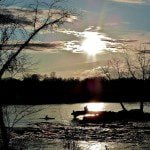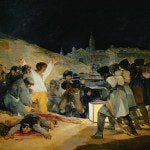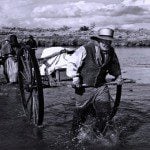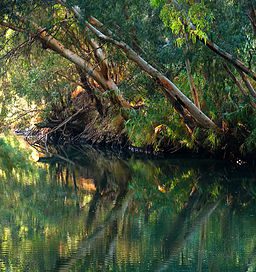
Just a few quick notes about this passage.
1.
I’ve already noted the reference to John’s having chosen his baptismal site (“at Aenon near Salim,” almost certainly on the Jordan River) “because there was much water there” (3:23). This strongly suggests baptism by immersion rather than by sprinkling.
2.
The word Aenon reflects an underlying Aramaic term for a “spring” (similar in Hebrew and Arabic). The famous Madaba Map in the Hashemite Kingdom of Jordan, which , describes it as ![]() (“Aenon, where Sapsaphas now is”) and suggests a location for it:
(“Aenon, where Sapsaphas now is”) and suggests a location for it:
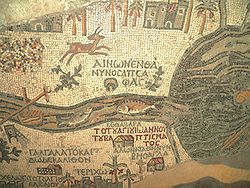
3.
Note that Jesus is said in 3:26 to have been with John “beyond the Jordan” (πέραν τοῦ Ἰορδάνου) which seems to support the Jordanian claim to have the site on their side of the river. So, too, does the Madaba Map, shown above: The large body of water on the right of the image is the Dead Sea. The Jordan River flows into the northern end of the Dead Sea, which means that the Dead Sea is toward the south. With that orientation in mind, the site identified as “Aenon” seems to be on the eastern side of the Jordan River — which is to say, in what is today the Hashemite Kingdom of Jordan, not Israel.
4.
The word ἄνωθεν, which is translated as “from above” in 3:31, is the very word that’s translated “again” or “anew” (as in “born again”) in John 3:1-21. I told you that it could mean both “again” and “from above.”



